- Mind blowing handling and grip
- Surprisingly comfortable when needed
- Impeccable track approved warranty
- Interior detracts from car's magic
- Road noise can be intrusive
- The exhaust will annoy your neighbours
There is no mistaking the 2020 Hyundai i30 N as Hyundai’s first proper high performance car. The baby of ex-BMW M division boss Albert Biermann, the i30 N has been developed far beyond any other Hyundai before it. From the moment you set off, you can tell that this is not any other regular i30, or indeed just another hot hatch. What Hyundai have given us is a staggeringly successful attempt at a car that is just as at home on the track, such as the Nurburgring where it was developed, as it is cruising through inner city streets. Join us as we see whether the hatchback version of the i30 N tested here can replicate the success of the i30 N Fastback which we drove recently.
Price & Specs: 8/10
Coming in at just $41,400 before on road costs, the 2020 Hyundai i30 N nothing short of a bargain in the hot hatch segment. With a base Golf GTI now priced from $47,190 before on-roads, and the hotter GTI TCR on sale from $51,490 before on-road costs, Hyundai’s i30 N manages to undercut all of its main competitors on price.
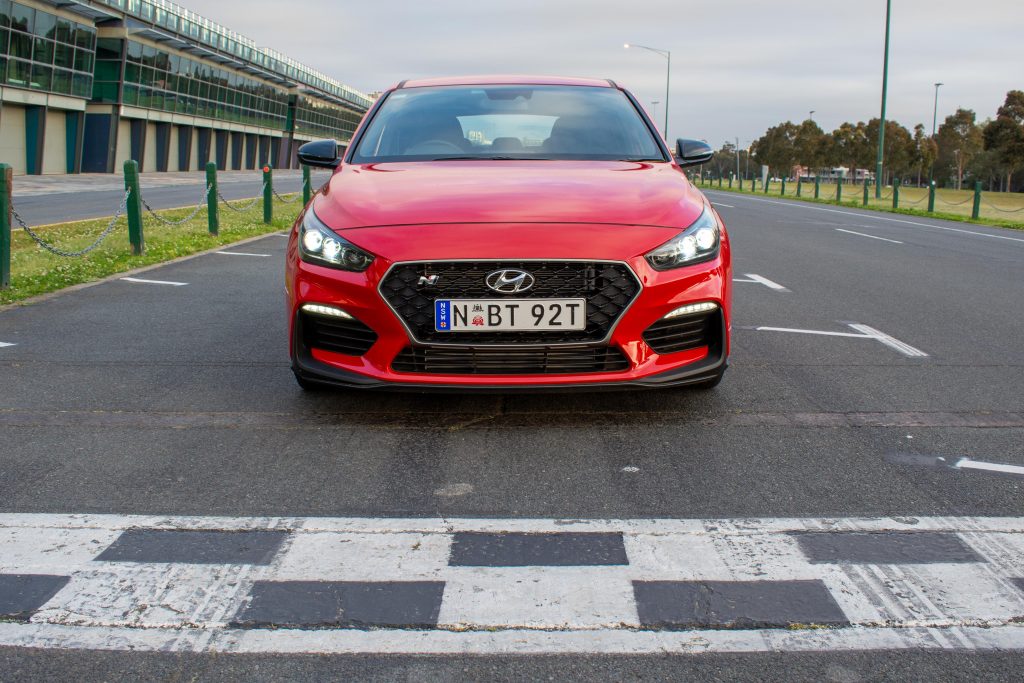
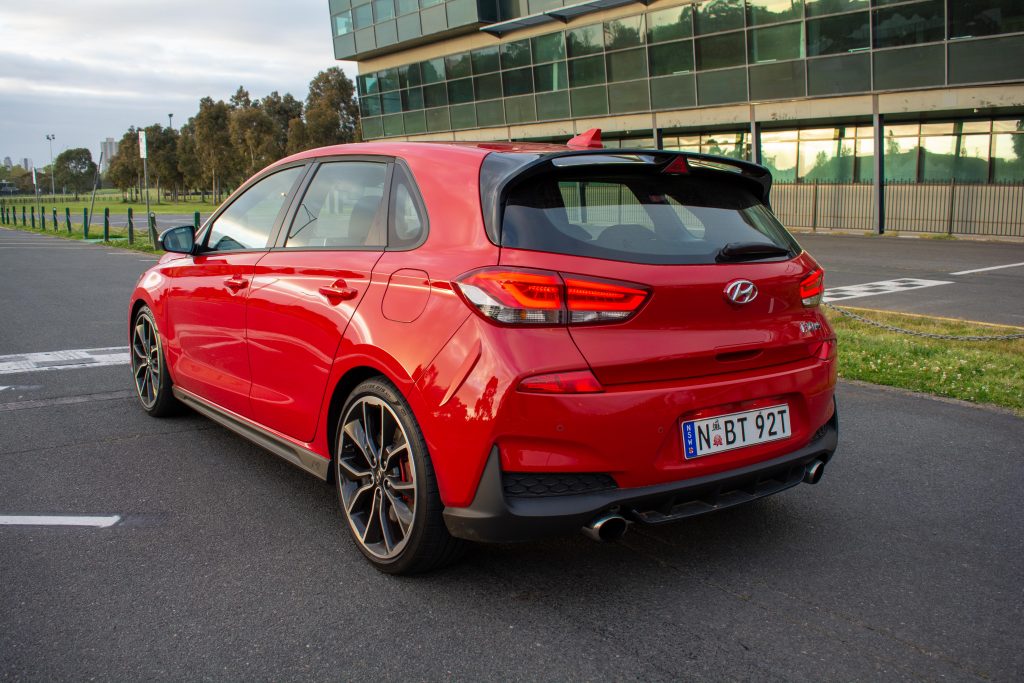
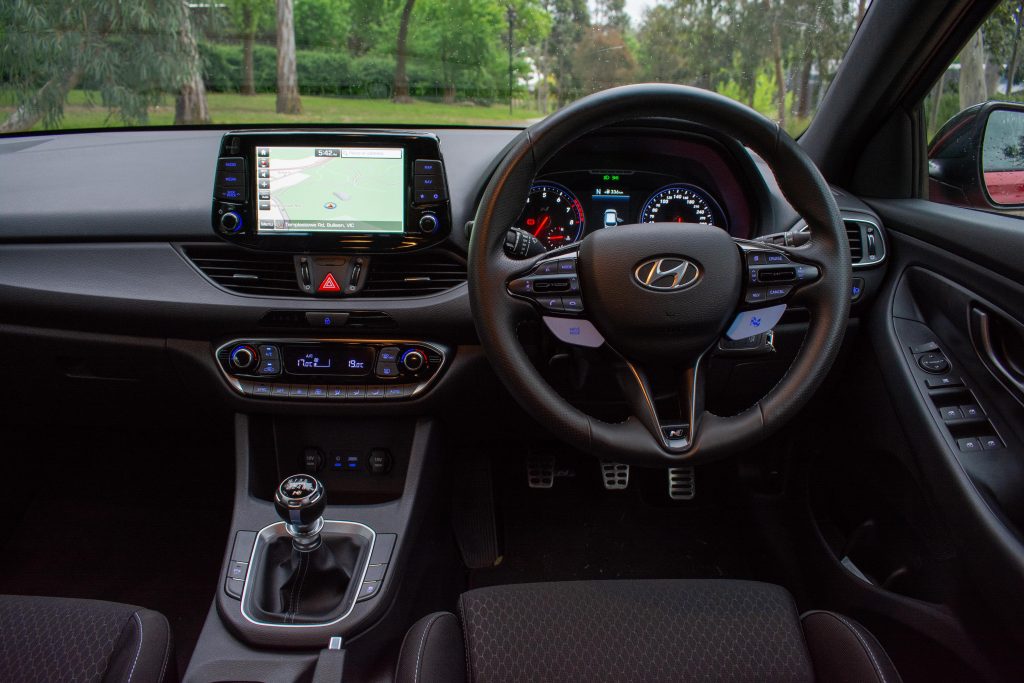
A powerful two-litre turbo with a proper mechanical e-LSD, a sports exhaust, 19-inch alloy wheels wrapped in sticky Pirelli tyres are all present and accounted for in the Czech-built hatch. Inside, you’ll find an 8.0-inch touchscreen with Apple CarPlay and Android Auto, inbuilt satellite navigation with live traffic reporting, dual-zone climate control and rear parking sensors with a reversing camera. Sports bucket seats with blue stitching and a leather sports steering wheel also differentiate the i30 N from any other member of the i30 family.
On the safety front, all i30 Ns come with forward collision warning with auto emergency braking (AEB), lane keep assist with lane departure warning as well as 7 airbags. Sadly, adaptive cruise control, blind-spot monitoring with rear cross-traffic alert are all missing. Expect these features to arrive once the updated i30 N facelift comes online in the first part of 2021.
The 2020 Renault Megane RS300 Trophy which we recently tested comes in at $53,490 plus on roads, quite a lot more than the i30 N tested here. Even when equipped with the Luxury Pack ($3000) or the Luxury Pack with Panoramic Sunroof ($5000), the i30 N still undercuts the Megane RS on price.
Performance & Economy: 8/10
The i30 N comes exclusively with a 2.0-litre turbocharged four-cylinder, producing 202kW of power and 353Nm of torque, with torque rising to 378Nm on overboost for period of up to 18 seconds. Purists can rejoice that the only transmission on offer for now is a six-speed manual, with the much talked about eight-speed dual clutch auto due to arrive next year. Hyundai claims that the sprint from 0 to 100km/h takes 6.1 seconds which we would say is bang on.
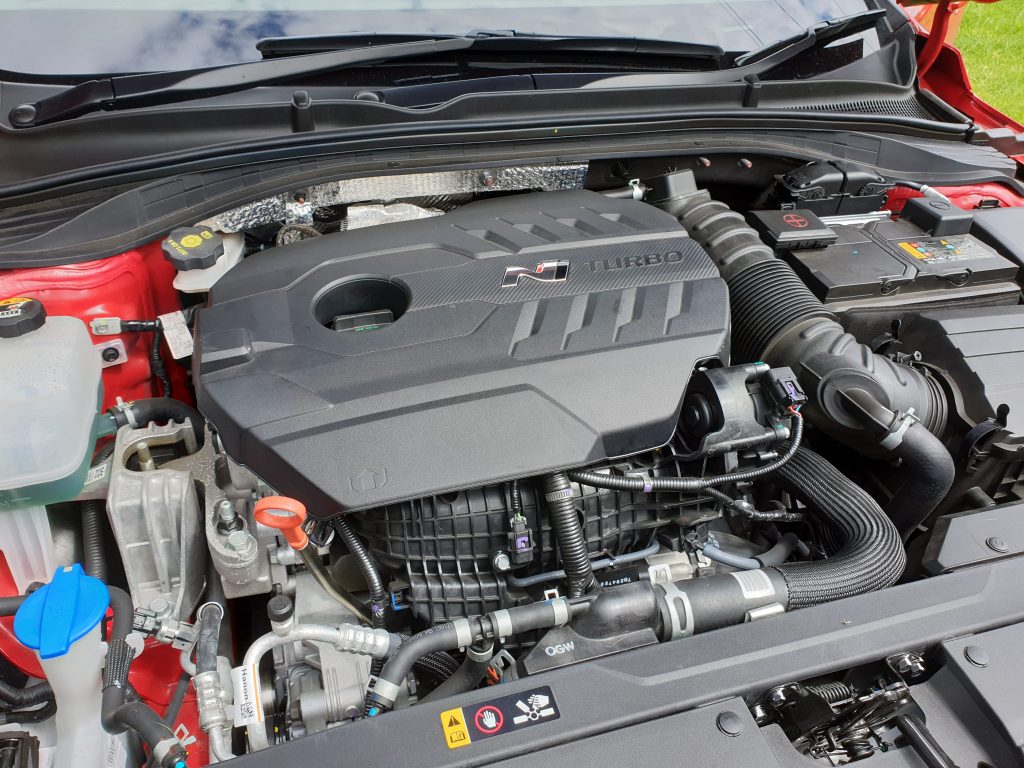
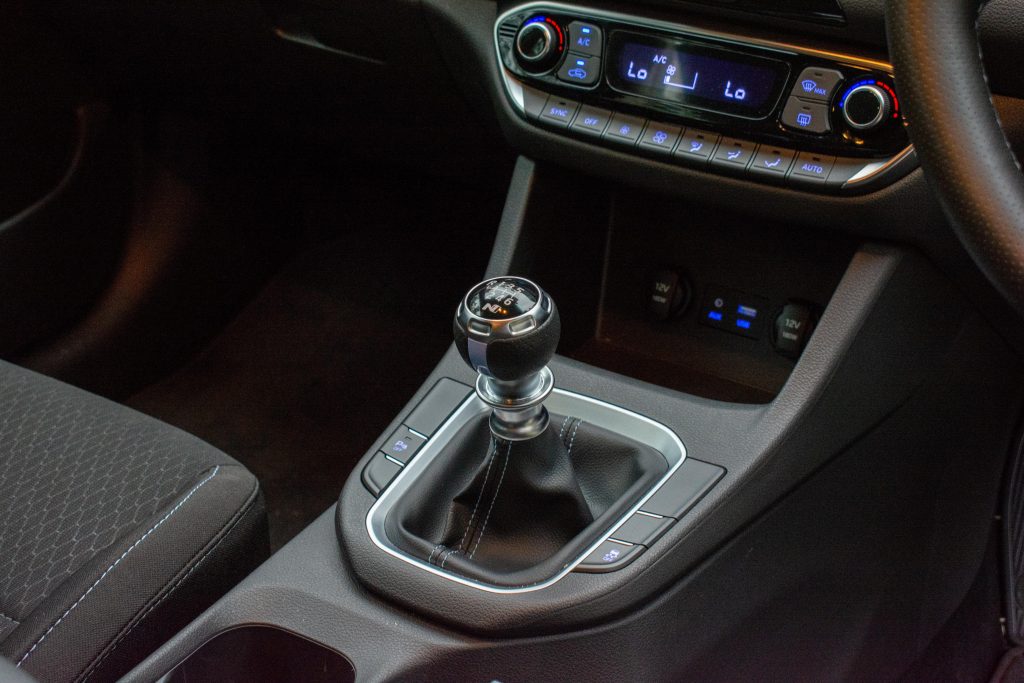
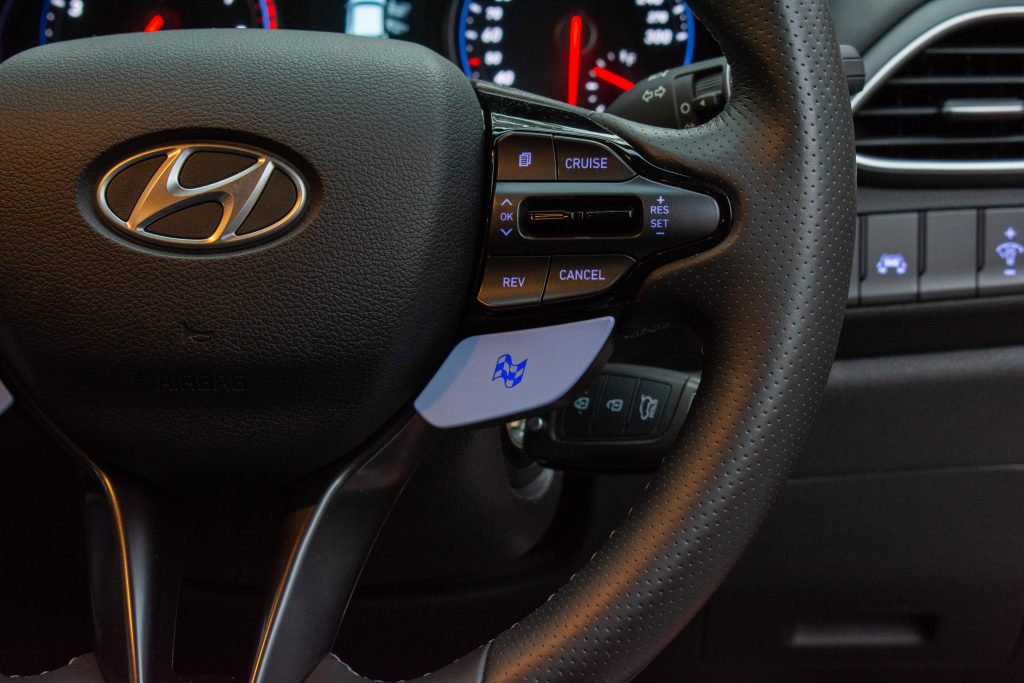
Apart from a tricky clutch which bites right at the top and can be a little difficult to modulate, the drivetrain at the heart of the i30 N shows its brilliance and engineering talent in droves. The engine pulls strongly from low revs all the way to the redline with its boundless amounts of torque. The gearshift is light and has a short throw, “sucking” gears into their slot with the utmost precision. The inclusion of automatic rev matching is nothing short of ingenious, making the i30 N easy to drive smoothly. Heel and toe experts can disable the feature easily, but for those who aren’t racing gods, the i30 N is just so natural to drive quickly.
The baby of ex-BMW M division boss Albert Biermann, the i30 N has been developed far beyond any other Hyundai before it.
One of the most impressive things about the i30 N is the way it sounds. From the deep rumble at idle, to the pops and crackles on the overrun or the downright anti social machine gun like bangs on upshifts past 4000rpm, every drive is a true spectacle. Just bear in mind that your neighbours might not be as enthusiastic about it.
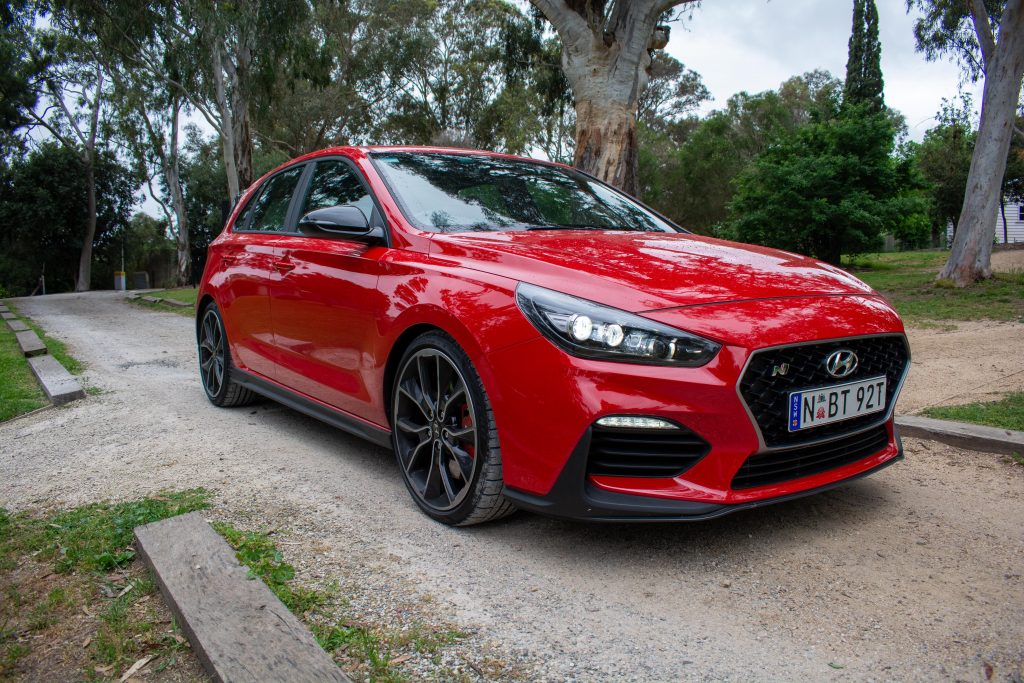
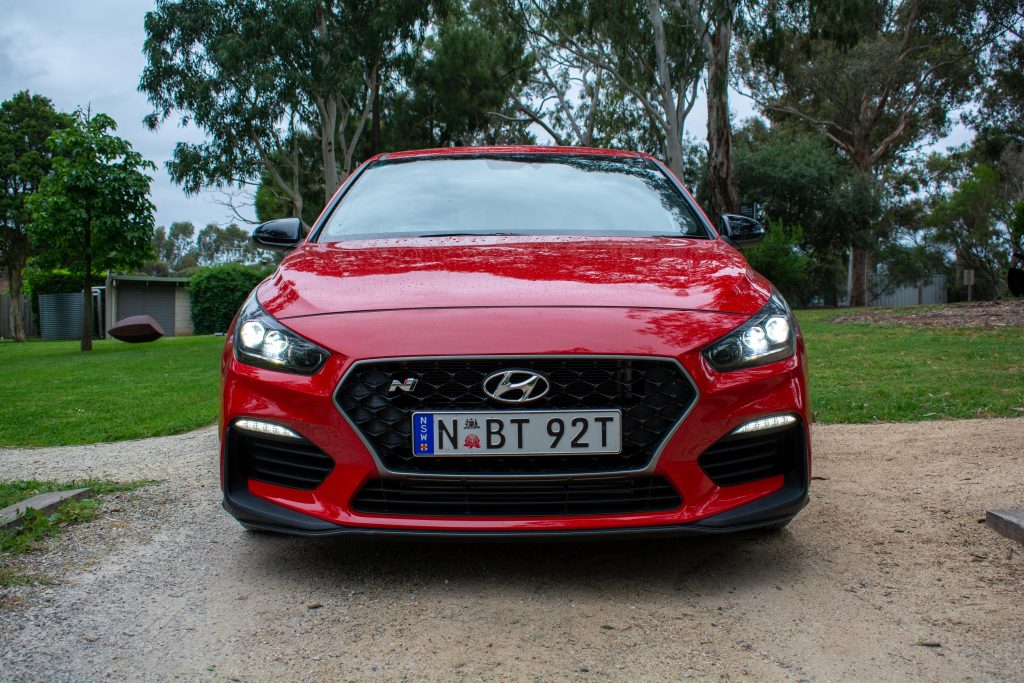
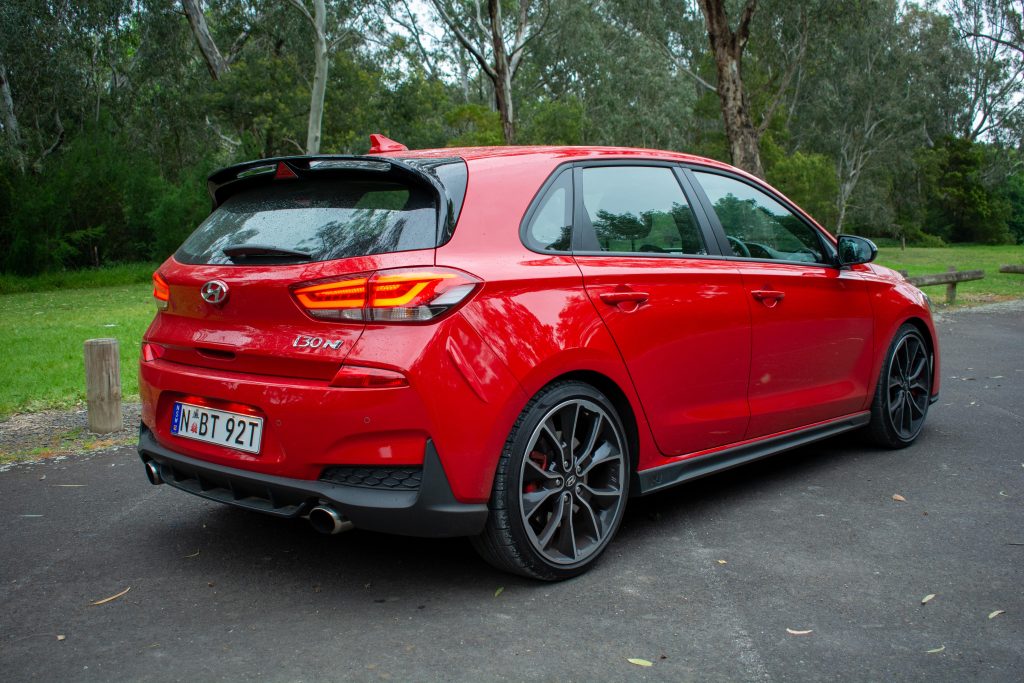
Hyundai has made it super easy change the engine’s behaviour with fully customisable drive modes. Want rev matching, with a quiet exhaust and a more docile less responsive throttle response for inner city traffic? Then hit the N button on the steering wheel twice to go into N Custom mode to set your ideal settings. More about this mode later.
Despite a whole week of enthusiastic driving, I managed to achieve just over 10.0L/100km, not too much north of the of 8.0L/100km claimed average. An excellent result considering the performance on offer.
Ride & Handling: 9/10
One of the most impressive things about this car is that it manages to be perfectly comfortable to live with everyday, yet robust and entertaining enough to perform superbly on a racetrack lap after lap. This is in no small part thanks to the adjustable drive modes and the almost infinite customisability which the i30 N offers.
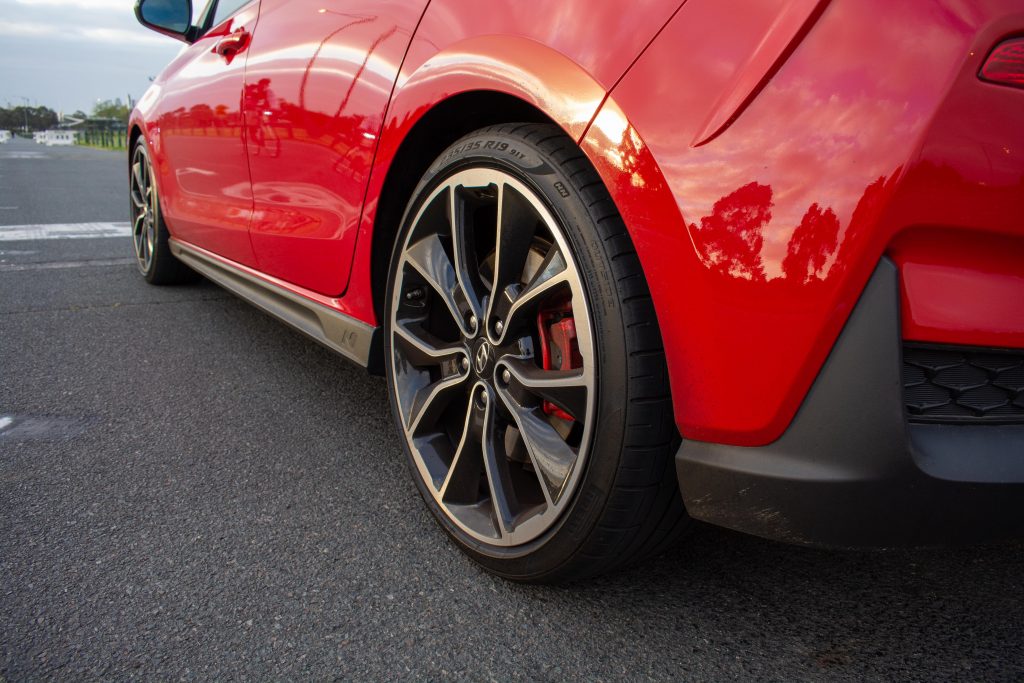
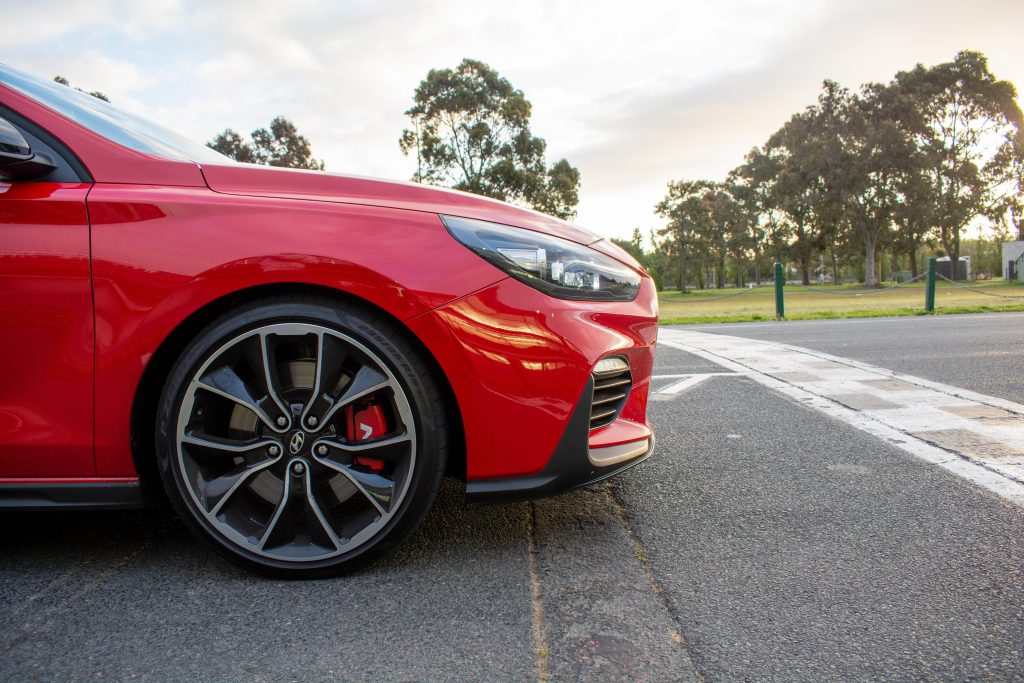
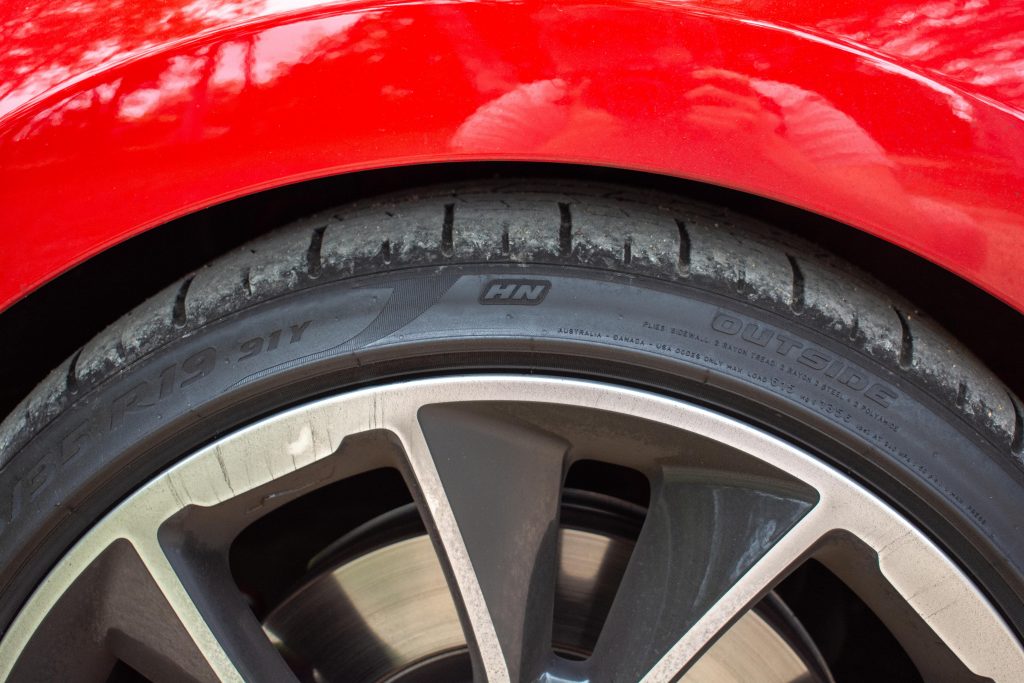
There are five drive modes in this car. Three are accessed via the steering wheel’s ‘drive mode’ button: these are Eco, Normal and Sport. Via a separate chequered flag button on the right, you find N mode and N Custom mode.
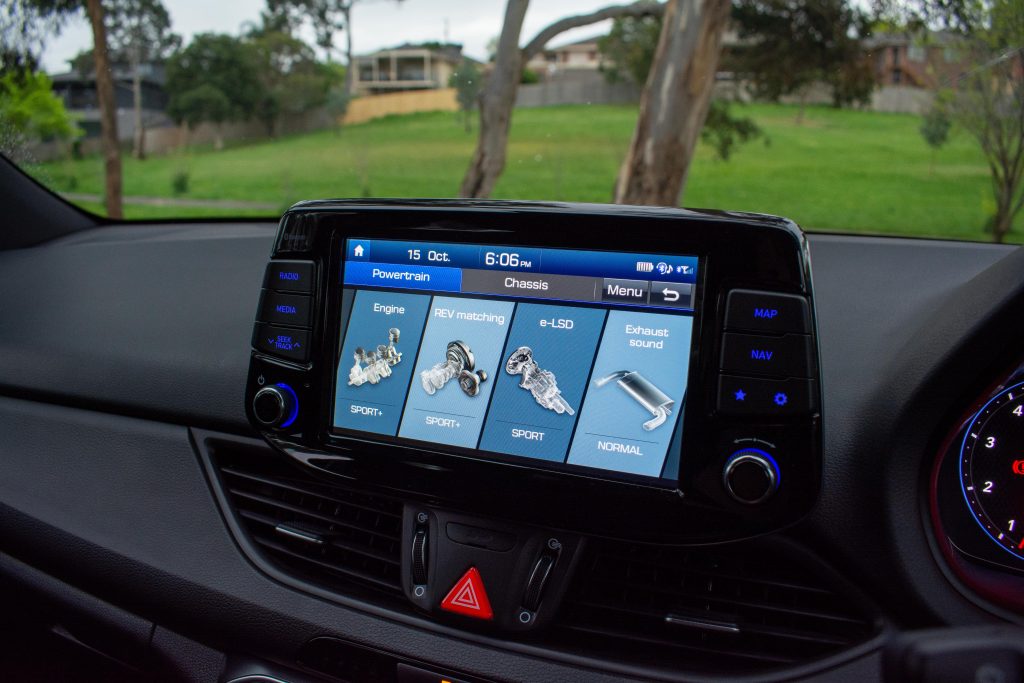
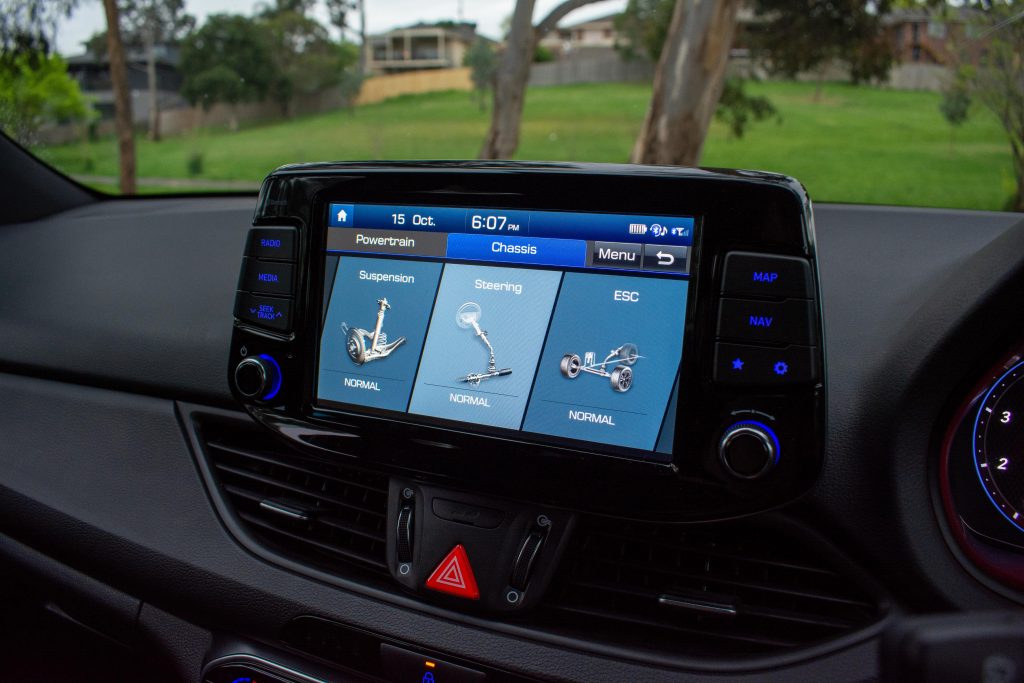
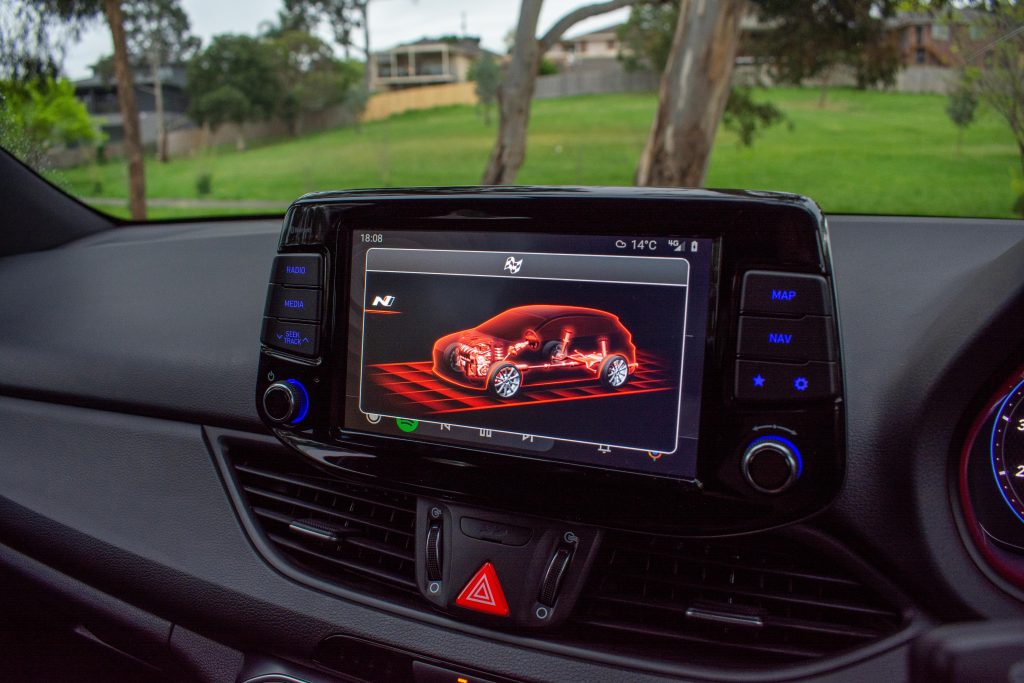
My personal favourite setup is found by heading to N Custom mode, placing all of the chassis settings (active dampers, e-LSD and ESC tune) into normal, whilst having the drivetrain settings in Sport+. I found the that the ride remained surprisingly supple, the steering light and full of feel and I was still able to enjoy the cacophony of pops and bangs from the exhaust.
The i30 N provides stunning levels of grip from its bespoke Pirelli P Zero HN (HN shows Pirelli’s codevelopment of the tyres with Hyundai) and the LSD allows the engine to slingshot the car through corners. The front end simply has so much grip whilst the steering allows the car to be placed exactly where the driver wants it to be. The handling is truly spot on, with a planted and neutral feel at the limit. Oversteer is rare, but can be induced should the i30 N be provoked.
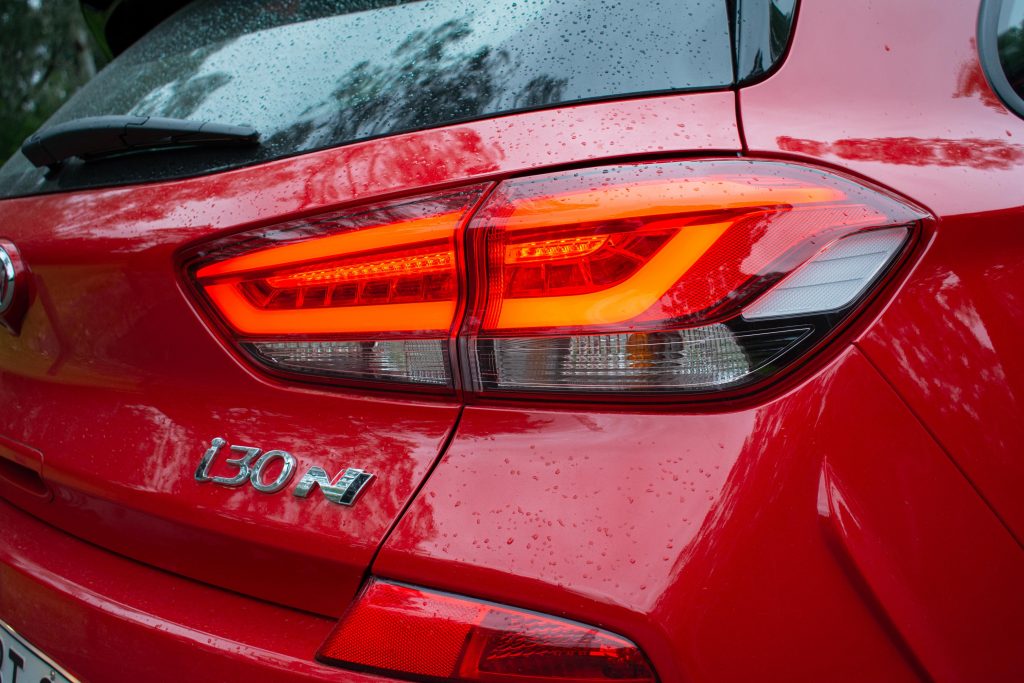
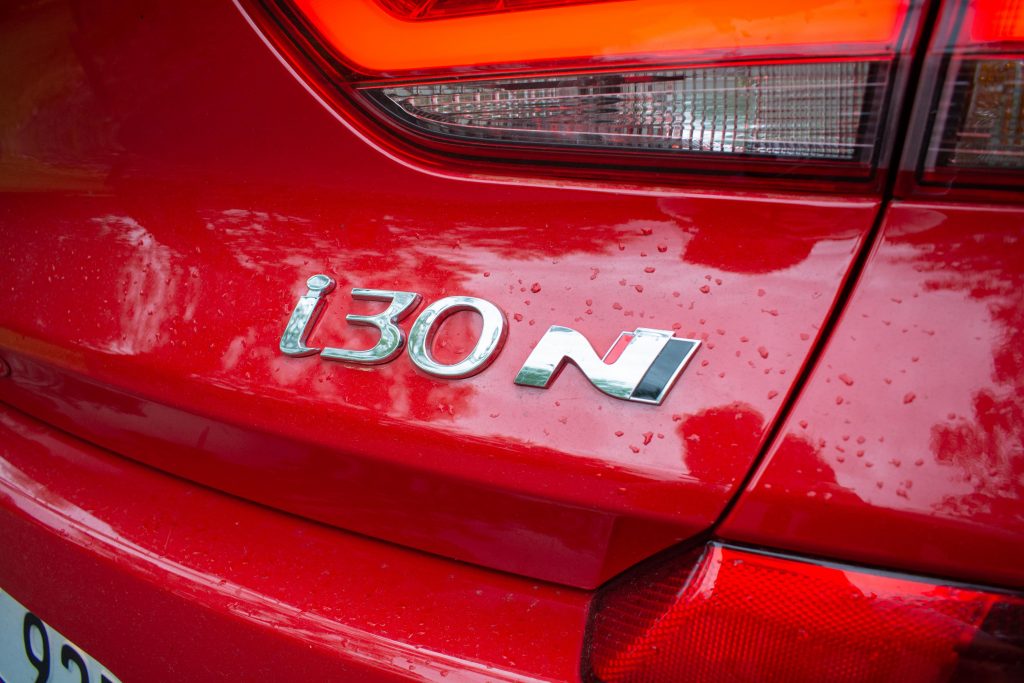
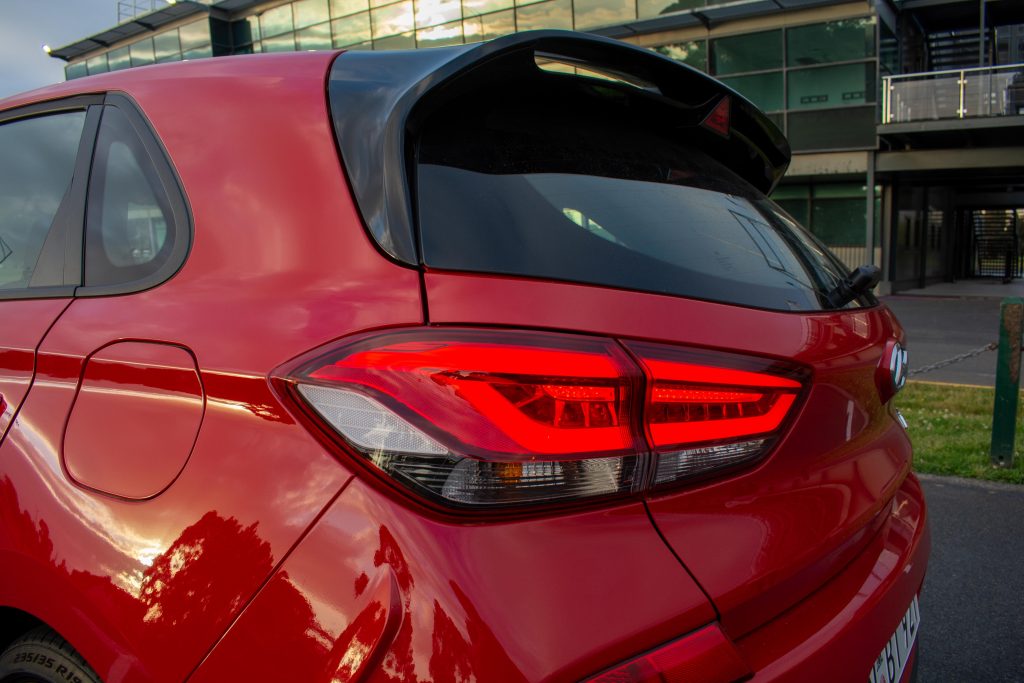
Most surprisingly however, the i30 is genuinely easy to live with daily. Away from the track and stuck in inner city traffic, the ride is comfortable and generally smooth when the car is set up as above in N Custom mode. It deals with terrible roads effortlessly, making sure that large bumps are barely felt inside.
Sadly the i30 N’s driving experience isn’t perfect, as it is just too noisy inside. Tyre roar is ever present, and the stereo really struggles to drown out the road noise as soon as you re up to speed,
Interior & Practicality: 7/10
My main issues with the 2020 Hyundai i30 N all centre around the lacklustre interior, which was left relatively unchanged from the regular i30 – the N budget clearly went to the engineering of the parts we can’t see. For a car costing more than $41,000, the cabin ambience is boring and sombre. Whilst I understand that the engineers wanted to minimise distractions, focusing the driver on actually driving the car, I had to double check that I hadn’t become colourblind, such is the lack of anything other than black plastic inside.
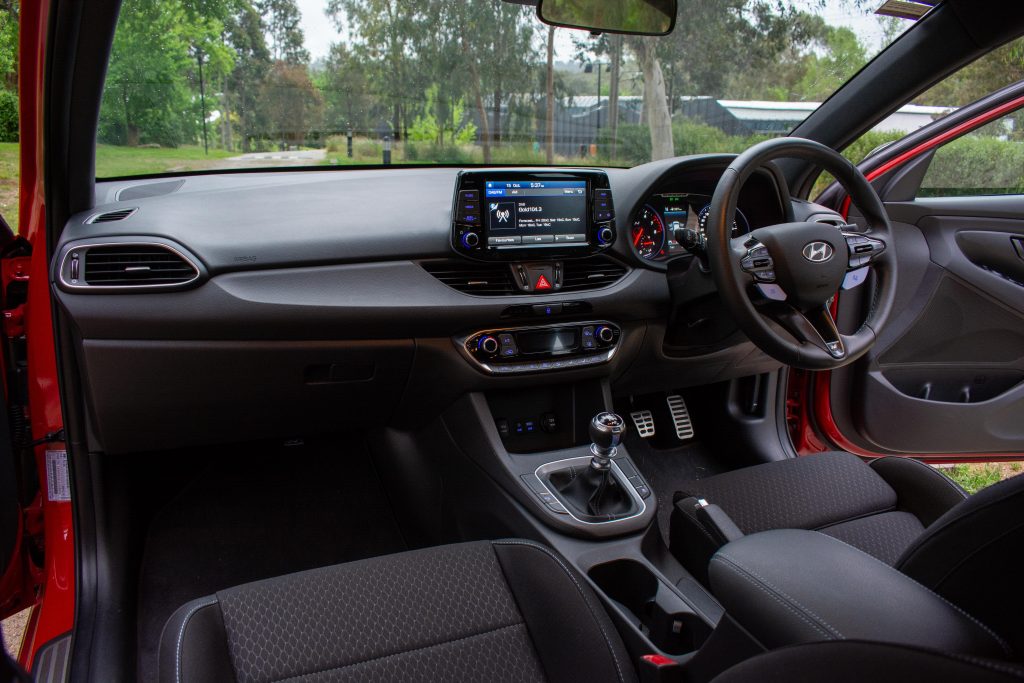
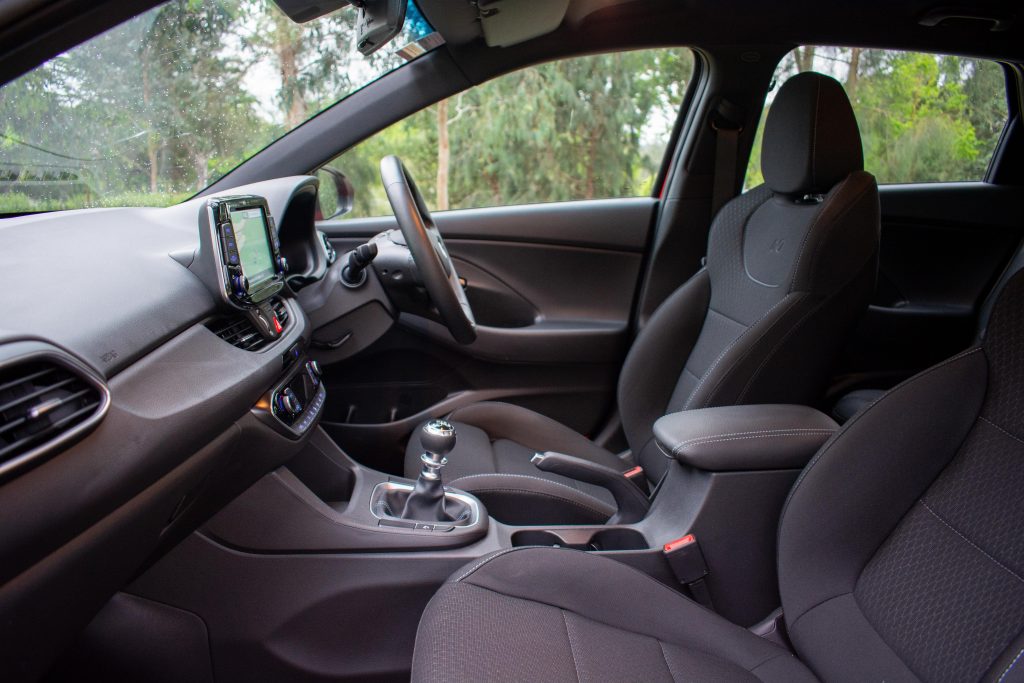
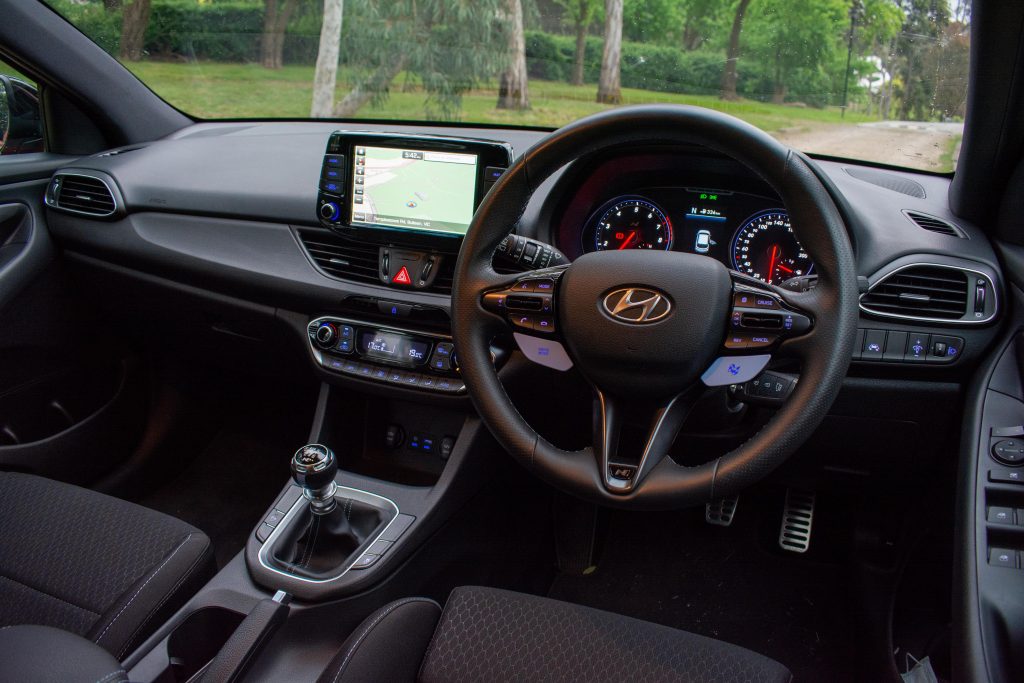
The seats are well bolstered and made of cloth. Sadly, they are as boring as the rest of the interior, with only some feint blue stitching in areas to make them appear more special than those in any other i30. Luckily, the i30 N facelift due next year will offer more visually appealing sports front seats and new trims through the cabin, to lift the dark mood inside the current i30 N.
I cannot help but feel a little torn here; the interior is the only non magical aspect of the entire car, the one negative chapter of Hyundai’s fairytale of creating a hot hatch which is so capable and so much more than just a Golf GTI wannabe.
I hadn’t become colourblind, such is the lack of anything other than black plastic inside.
The interior’s basics are decent however; the 8.0-inch screen is bright and well positioned, the driving position spot on and there is enough room to carry 4 adults comfortably. The boot is a decent 395 Litres with a few hooks to hang shopping bags off.
A word of warning when you fold down the seats; there is a removable chassis brace right behind the front seats which will prevent you from carrying long items with it in place.
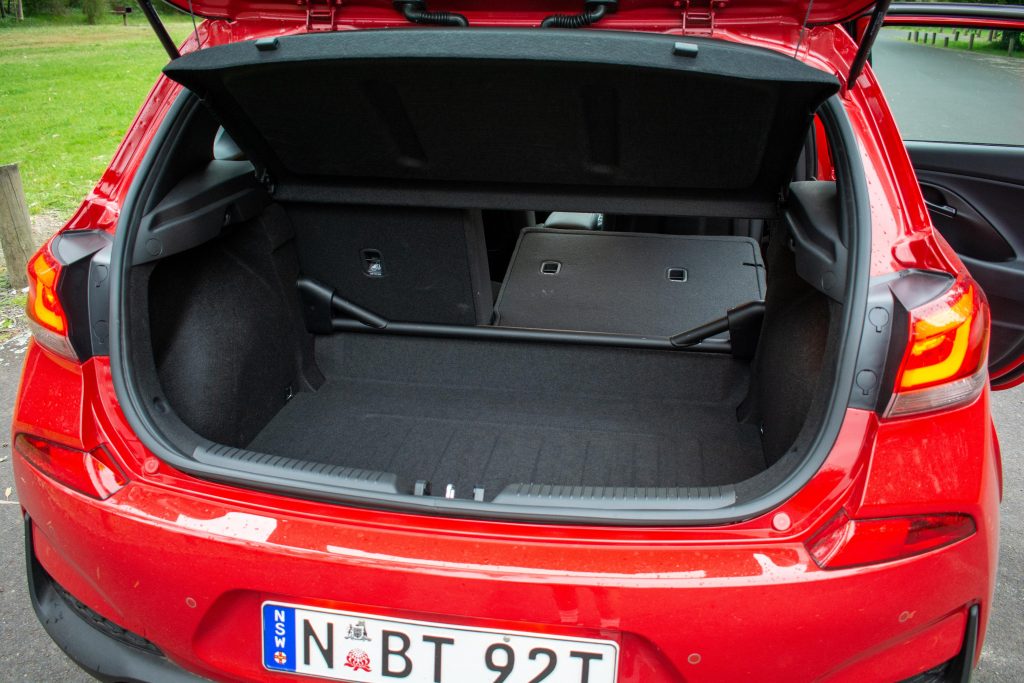
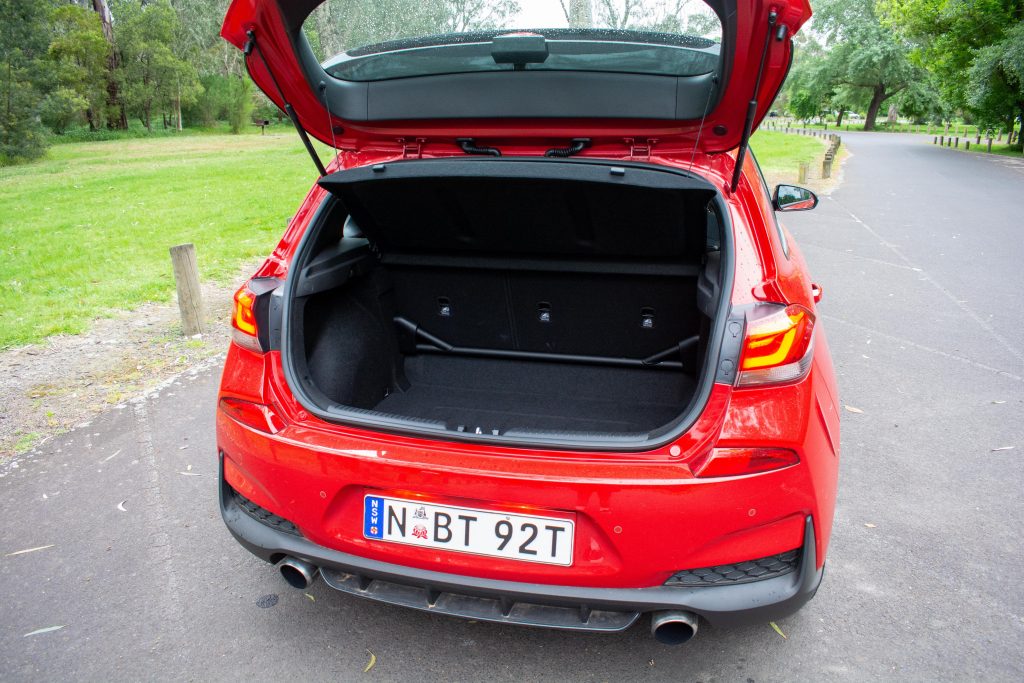
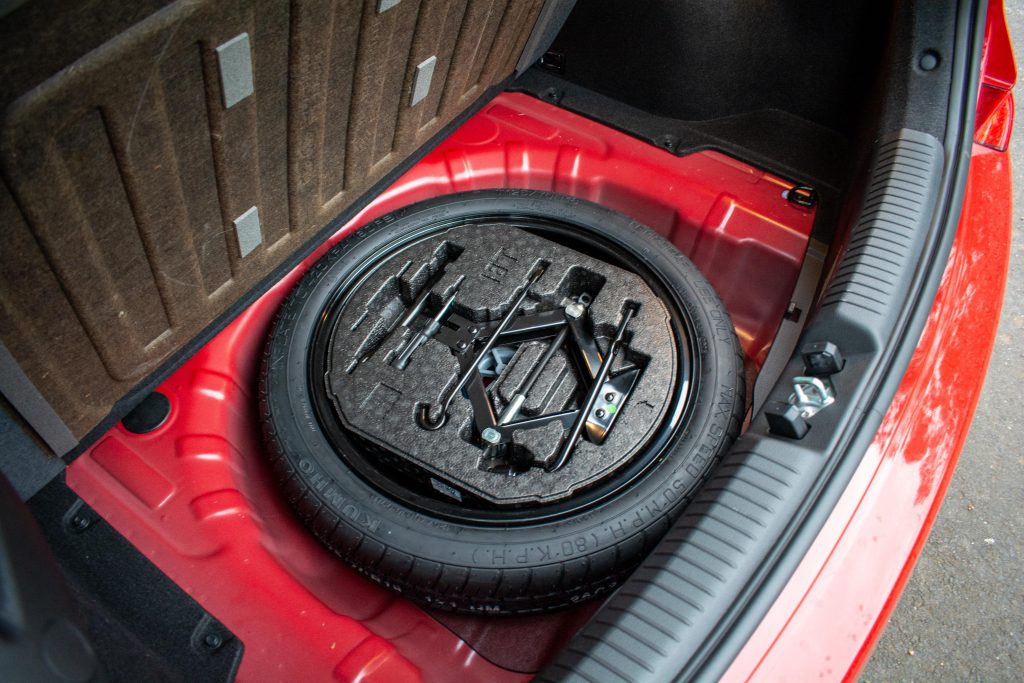
Under the somewhat flimsy boot floor, a space saver tyre can be found. Far superior to the useless bottle of glue found in some vehicles instead of an actual tyre.
Service & Warranty: 9/10
The 2020 Hyundai i30 N is covered by a five-year/unlimited kilometre warranty which crucially also covers track use in non-competition events. This makes the i30 N the only car in its class that will not have its warranty voided should it venture out onto a track.
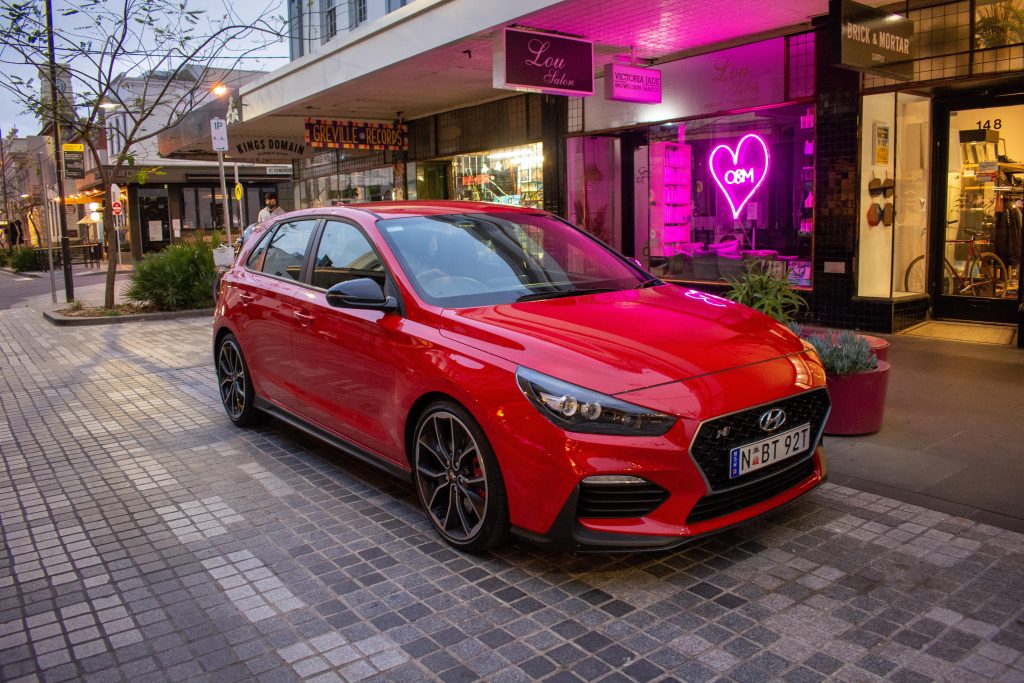
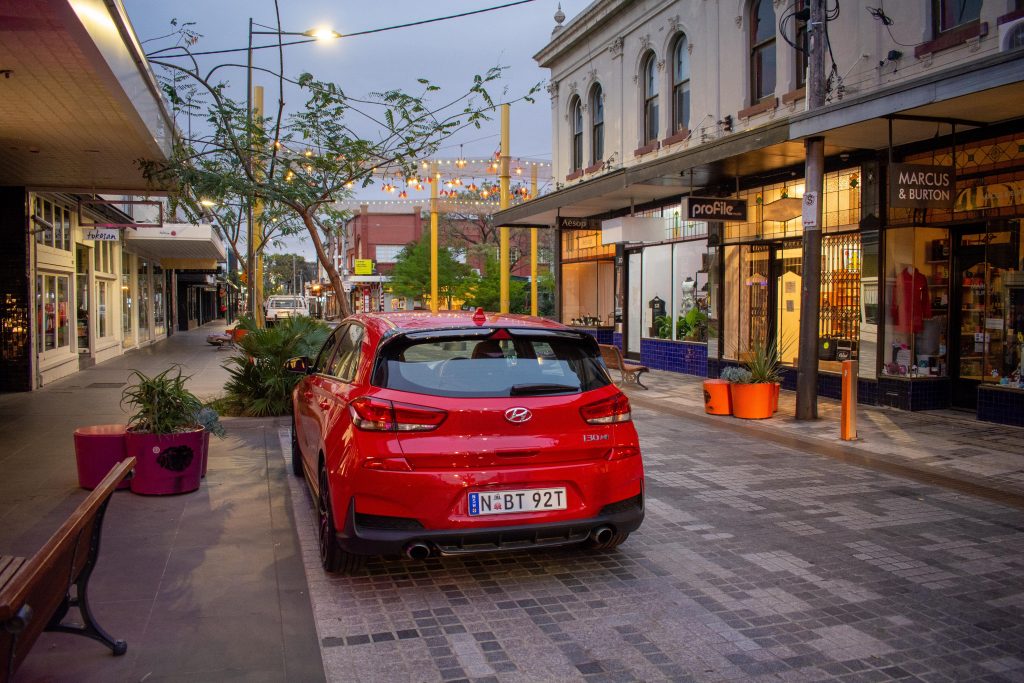

All i30N models come with a lifetime capped-price servicing plan with each service costing on average of only $319; your i30N will cost only $1,595 over a period of 5 years. A Volkswagen Golf GTI’s service costs a whopping $571.40 on average, with 5 years of servicing setting owners back $2875 over 5 years.
10 years of satellite navigation updates and roadside support for up to 10 years when serviced at a Hyundai dealer.
DiscoverAuto 2020 Hyundai i30 N Performance Rating: 8.2
As the first attempt from Hyundai’s N performance division, the 2020 Hyundai i30 N is nothing short of brilliant. With its sharp pricing, potent engine and stunning handling coupled with everyday usability, the i30 N is one of the finest hot hatches on sale. Come 2021, we cannot wait to see it sell in even bigger numbers on account of its new automatic gearbox and improved interior. Seldom do manufacturers make such a strong entrance on their first go, Hyundai has certainly put the hot hatch world on notice.
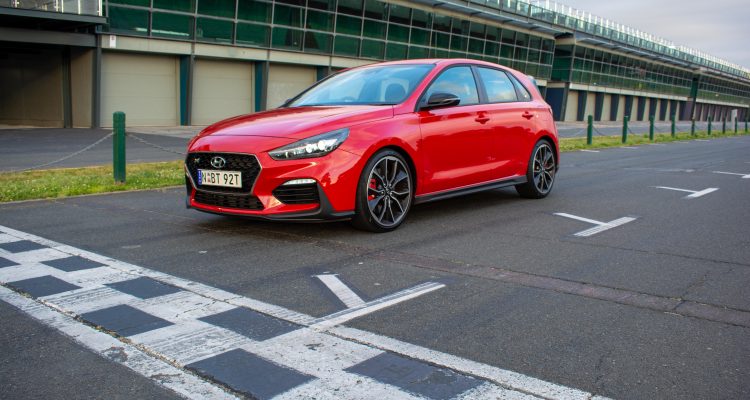
i would like oneeeeeeeee